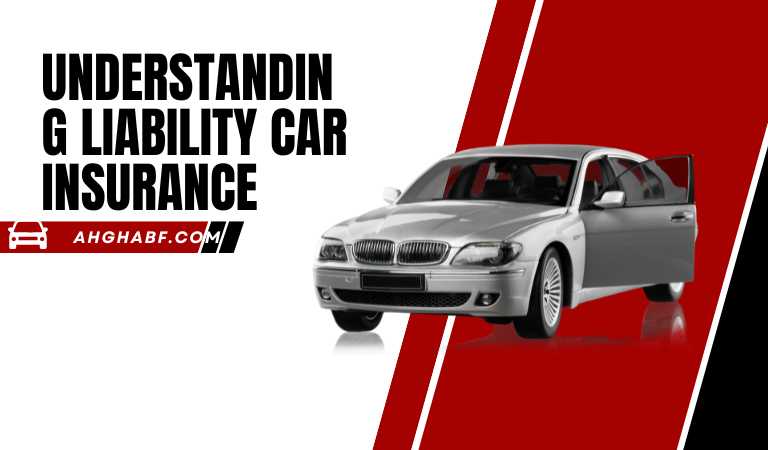Introduction to Liability Car Insurance
Making sure everyone’s safe is of the utmost importance when driving. On the other hand, have you ever given any thought to the consequences of an accident? Despite our best efforts, accidents may happen at any moment and in any place.
That’s where liability car insurance comes into play. It’s not just another line item on your budget; it’s a crucial protection for you and others on the road. Understanding how liability car insurance works can empower you as a driver, ensuring you’re prepared for whatever life throws. Let’s dive into everything you need to know about this essential coverage!
Types of Liability Coverage
Liability car insurance comes in a few different types, each serving its purpose. Liability for physical harm is the most prevalent. If you cause another person’s injuries in an accident, this coverage may assist cover their medical bills.
Then there’s property damage liability. This kicks in if you damage someone else’s vehicle or property during a crash. It covers repair costs and helps protect your assets.
Another necessary type is personal injury protection (PIP), though it varies by state. Injuries to other people, as well as your own medical costs, missed earnings, and other associated costs, may be covered by PIP.

Uninsured/underinsured motorist coverage is another consideration. If a driver hits you without enough insurance—or no insurance—this policy helps cover the costs that their policy wouldn’t fully address.
Each type has unique benefits, so understanding them can help you make informed choices about your coverage needs.
Minimum Liability Requirements by State
Liability car insurance requirements vary significantly across the United States. In order to lawfully drive a car, drivers must fulfill the minimum coverage levels imposed by each state.
Minimums of $15,000 per individual for bodily harm and $30,000 per occurrence are mandated in some jurisdictions, such as California. Others, such as Florida, have different thresholds that might surprise new residents.
Understanding your state’s specific laws is crucial. Drivers caught without adequate liability coverage can face hefty fines or even suspension of their driving privileges.
It’s also important to note that certain states follow a “no-fault” system. Under this system, insurance companies cover their policyholders regardless of who caused an accident.
Before getting insurance, make sure you know the specific rules in your region by contacting the DMV or similar agency.
Factors that Affect Rates for Liability Insurance
Several variables influence the rates for liability car insurance. Your driving record stands out as one of the most crucial. Rate increases may occur if there is a record of accidents or moving offenses.
Your age and gender also play a role. Younger drivers typically face steeper rates due to their inexperience on the road.
Location matters, too. Urban areas with heavy traffic often see increased risks, leading insurers to charge more for coverage than in rural settings.
The type of vehicle you drive impacts costs as well. High-performance cars or those with higher theft rates generally result in elevated premiums.
Insurers consider credit scores when determining rates. Better credit can lead to lower premiums because it indicates responsible behavior overall.
Choosing the Right Liability Insurance Policy
When selecting the right liability car insurance policy, assess your personal needs. Take into account things like how often you drive, the kind of car you have, and your budget.
Next, evaluate coverage limits. Higher limits offer more protection but come with increased premiums. Find a balance that fits your financial situation while sufficiently covering you.
Research different providers. Compare their customer service ratings and claims processes to ensure you’ll receive support when needed. Feel free to consult others close to you who have already had good experiences for suggestions.
Look into bundling options, too. Many insurers provide discounts if you combine auto with home or other policies.
Read reviews about the company’s payout history during accidents. A reliable insurer will handle claims efficiently without unnecessary delays or complications in stressful situations.
What to Do in the Event of an Accident
Accidents can be stressful and chaotic. Knowing what to do immediately after one occurs is crucial for protecting yourself and your interests.
First, ensure everyone’s safety.Please dial 911 immediately in the event that someone is hurt. Your health and the health of others involved should always come first once it’s safe to move vehicles out of traffic.
Talk to the other motorist or drivers about it next. Names, phone numbers, addresses, insurance data, and numbers for license plates are all part of this. Documenting this information accurately will help when filing a claim later on.
It’s also wise to take photos of the scene. Capture images of all vehicles from multiple angles and any relevant road signs or signals. If there are any disagreements over who was at blame in the future, these visual recordings may be very helpful.
Gather witness statements from bystanders who saw the accident unfold. Their accounts may help clarify what happened if conflicting stories arise between drivers.
Also Read: Credit Scores and How They Affect Your Car Insurance
After addressing immediate concerns at the scene, immediately notify your insurance company about the accident. They will guide you through the following steps regarding filing a claim under your liability car insurance policy.
Remember that remaining calm is critical throughout this process. Unexpected accidents may happen at any time, but being prepared to react quickly can help ensure a smooth resolution without any additional stress.